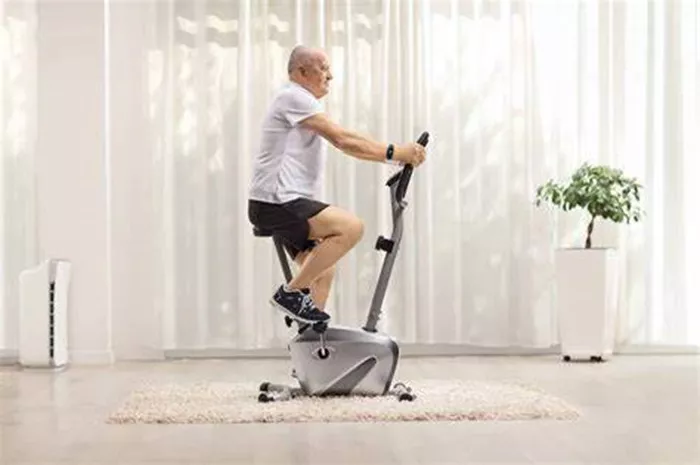Riding a stationary bike can be a beneficial exercise option for individuals with bad knees. It offers a low-impact workout that helps improve cardiovascular health, build muscle strength, and maintain flexibility without placing excessive strain on the knee joints. This article will provide detailed guidance on how to safely ride a stationary bike with bad knees, including setup tips, workout routines, and additional exercises to complement your cycling regimen.
Knee Pain and Its Causes
Knee pain can arise from various conditions such as arthritis, tendonitis, or injuries. Understanding the underlying causes of your knee pain is crucial in determining the best approach to exercise. Common causes include:
Arthritis: This degenerative joint disease can lead to pain and stiffness in the knees.
Tendonitis: Inflammation of the tendons around the knee can result from overuse or injury.
Injuries: Past injuries, such as ligament tears or fractures, may cause ongoing discomfort.
Recognizing these conditions can help tailor your cycling routine to avoid exacerbating your symptoms.
Choosing the Right Stationary Bike
Selecting an appropriate stationary bike is essential for ensuring comfort and minimizing knee stress. Here are some considerations:
Recumbent Bikes: These bikes have a reclined seating position that provides better back support and reduces pressure on the knees. They are ideal for individuals with severe knee issues.
Upright Bikes: If you prefer an upright bike, ensure it has adjustable seat height and handlebar positions to accommodate your body size.
Adjustable Resistance: Look for bikes that allow you to adjust resistance levels easily. Start with low resistance to avoid straining your knees.
Pedal Type: Choose bikes with large pedals or those that allow for foot straps. This feature helps stabilize your feet and provides better control during cycling.
Setting Up Your Bike Properly
Proper bike setup is crucial for preventing knee pain while cycling. Follow these steps:
1. Adjust Seat Height: When sitting on the bike, your knee should be slightly bent when the pedal is at its lowest point. A good rule of thumb is to ensure that your leg is almost fully extended but not locked.
2. Position the Seat Forward or Backward: Your knee should align with the pedal axle when your foot is at the 3 o’clock position (the furthest point forward). This alignment helps reduce stress on the knee joint.
3. Handlebar Height: The handlebars should be at a comfortable height that allows you to maintain a relaxed posture without straining your back or shoulders.
4. Foot Positioning: Ensure that your feet are securely placed on the pedals. Use shoes with stiff soles for better power transfer and support.
5. Warm-Up Before Cycling: Engage in gentle stretching or light movements before getting on the bike to prepare your muscles and joints.
See Also: How Many Calories Does 15 Minutes of Cardio Burn?
Starting Your Cycling Routine
When beginning your cycling journey with bad knees, it’s essential to start slowly and gradually increase intensity. Here’s a suggested approach:
1. Begin with Short Sessions: Start with 10-15 minutes of cycling at a low resistance level. Focus on maintaining a steady pace rather than speed.
2. Frequency: Aim for 3-4 sessions per week initially. As your strength and endurance improve, gradually increase both duration and frequency.
3. Monitor Your Body’s Response: Pay attention to how your knees feel during and after each session. If you experience pain, reduce intensity or duration accordingly.
4. Increase Duration Gradually: Once you feel comfortable, increase your cycling time by 5-minute increments until you reach 30-45 minutes per session.
5. Incorporate Interval Training: As you progress, consider adding short intervals of increased resistance followed by recovery periods at lower resistance levels. This method can enhance cardiovascular fitness without overstraining your knees.
Complementing Cycling with Strengthening Exercises
To further support knee health, integrate strength training and flexibility exercises into your routine:
Strengthening Exercises: Focus on building strength in the quadriceps, hamstrings, calves, and glutes. Exercises such as leg lifts, squats (with proper form), and resistance band workouts can be beneficial.
Flexibility Exercises: Incorporate stretching routines targeting the legs and hips after cycling sessions to enhance flexibility and reduce muscle tightness.
Low-Impact Activities: Consider activities like swimming or water aerobics that provide cardiovascular benefits without stressing the joints.
Listening to Your Body
Listening to your body is paramount when exercising with bad knees:
If you experience sharp or persistent pain during cycling, stop immediately and assess whether adjustments are needed in setup or technique.
Consult a healthcare professional or physical therapist if pain continues despite modifications in your routine.
Rest days are equally important; allow adequate recovery time between workouts to prevent overuse injuries.
Maintaining Motivation
Staying motivated while managing knee pain can be challenging but essential for long-term success:
Set realistic goals for yourself based on your current fitness level and gradually adjust them as you progress.
Keep track of your workouts using a journal or app to monitor improvements in duration, intensity, and overall comfort during cycling sessions.
Consider joining a group class tailored for individuals with similar challenges; this can provide support and encouragement from peers facing similar issues.
Reward yourself for reaching milestones; whether it’s treating yourself to new workout gear or enjoying a favorite activity outside of cycling, positive reinforcement can boost motivation.
Conclusion
Riding a stationary bike can be an effective way to stay active while managing bad knees. By choosing the right equipment, setting up properly, starting slowly, complementing cycling with strength training, listening to your body, and maintaining motivation, you can enjoy the benefits of indoor cycling without exacerbating knee pain. Remember that individual experiences may vary; always consult with healthcare professionals when making significant changes to your exercise routine.
[inline_related_posts title=”You Might Be Interested In” title_align=”left” style=”list” number=”6″ align=”none” ids=”12394,12382,12361″ by=”categories” orderby=”rand” order=”DESC” hide_thumb=”no” thumb_right=”no” views=”no” date=”yes” grid_columns=”2″ post_type=”” tax=””]



































